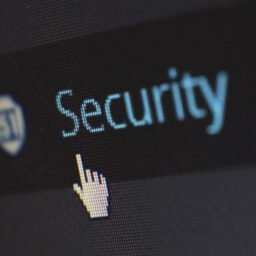INTRODUCTION
UAPA is one of the most talked-about acts in discussions related to various aspects of fundamental rights. This tool lately has come in handy for the political parties to rearrange the pieces according to their own needs. Contrary to current perception, the act was created for a noble cause of stymying terrorism and fostering national integrity and sovereignty. Whatsoever the purpose for which the act was established be, its nature in contemporary times has become increasingly offensive against fundamental rights. Incorporated stringency has increased the potential for misuse. Adding grit to the argument, protesters have found their spots in jails, with no clear sight of getting out within a reasonable period. This blog aims to shed light on the history of UAPA and the acts’ detrimental effect on two of the most affected fundamental rights.
HISTORY OF UAPA
National Integration Conference of 1961, convened by then Prime Minister Jawaharlal Nehru, dealt with the issues of communalism, separatism, regionalism, linguistic chauvinism, etc. after the developments, a National Integration Council was set up, wherein the Unlawful Activities (Prevention) Bill was introduced in 1966. The bill was introduced with the object of clamping down on the cliques invoking secessionist tendencies in the country and safeguarding the integrity and sovereignty of the nation. It prescribed for the setting up of a high-powered tribunal with a “sitting or retired high court judge as to the chairman and two others who qualified to be high court judges.” Any person who was found to be in association with proscribed groups was to be tried by the high-powered tribunal in terms of the Code of Criminal Procedure (hereinafter CrPC) and should be held liable for three, seven, or ten years. After many turns and obstacles, the law was enacted in 1967 and was shaped into an anti-terror law in 2004, and 2008. In amendment of the actin 2008, the UN Resolution including Resolution No. 1373/2001 was indented in the preamble, which was the reason for including terrorist activities in our domestic law mentioned above. Moreover, the act was amended again in 2019 to include individuals within the definition of “Terrorists” on certain grounds.
ABOUT UAPA
UAPA is known for its stringent procedures in acquiring bail and alleged purpose of nipping political dissent in the bud. Furthermore, it deviates from the normal course of proceedings and creates special courts with specific jurisdiction. For prosecution under Section 13 of the amendment act of 2019, it’s obligatory to take the permission of the Ministry of Home Affairs, while under Section 16, 17, and 18, it’s necessary to seek authorization from the State Government. In general, the relevant police authorities get 60-90 days to conduct their investigation for finding substantiate their charge sheets, failing which, the accused shall be granted bail by default. But, in the case of the UAPA, the accused can be detained for 180 days, before a charge sheet is filed, and no common procedure or rules of bail are applicable on the accused under Section 43(d)5 of the UAPA.
EFFECT ON FUNDAMENTAL RIGHTS
- FREEDOM OF SPEECH
- If we take the act for what it is, the verbiage used for the term “Terrorist Act” is vague and loose ended, which has left some room for the Government to quell political dissent and positive criticisms. Further, it’s highlighted that the definition is not cut from the same cloth as the definition given by the United Nations (UN) Special Rapporteur on the Protection of Human Rights and Fundamental Freedoms while Countering Terrorism.
- This act has become an easily accessible spigot for the government to create an air of intolerance for protests. Approximately 1,100 protestorsare under arrest and 5,558 kept in preventive detention concerning the CAA-NRC protests. For example, Pinjra Tod activists, amely Devangana Kalita and Natasha Narwal, and Iqbal Tanha, a student of Jamia Milia Islamia, were booked under the UAPA for having connections with the North-East Delhiprotests regarding the CAA, and their bail was denied at first. But subsequently, the Delhi HC stepped into side-line the Trial Courts judgment. The HC sharply criticized the Government for suppressing dissent, even though it’s a fundamental right as rendered in Maqbool Fida Hussain v. Rajkumar Pandey (2008). The right to Protest is a constitutionally guaranteed fundamental right, though not expressly provided, implied under Article 19. What stands out in the current scenario is that even alleged cheering for Pakistan in a cricket match, is a ground for the government, to book the individual under the UAPA.
- RIGHT TO SPEEDY TRIAL
- The speedy trial, as laid down in the case of Kartar Singh v. the State of Punjab, is a fundamental right guaranteed under article 21.Between 2016-2019, total of 4,231 FIRs were filed under various sections of the UAPA, of which only 112 cases have resulted in convictions, as per the National Crimes Report Bureau’s reported numbers. “Since 2015, there has been an increasein the number of UAPA cases. The number of arrests has drastically increased as well. In 2019, 1,948 people were arrested under the law, compared to 1,128 in 2015, a 72% rise The misuse of this legislation is evident: only 2% of the UAPA cases registered between 2016-’19 ended in convictions. Charge sheets were filed in just 17% of cases. Even former Supreme Court judges have raised concerns over UAPA being misused and asked for guidelines to be brought to curb this.” As per scroll.
- The pendency rate concerning the Trial stage is 95.5%. Moreover, he pre-charge sheet duration of 180 days with uncertainty to be granted bail, is an unreasonable provision in the act. But subsequent interventions by the Supreme Court like in the case of Union of India v. K.A. Najeeb (2021), for softening the rigid Section 43(d)5, n granting bail to the accused, are welcome in these testing times.
CONCLUSION
Though novel, this act is being implemented for all the purposes except for what it was originally enacted for. The overly active implementation of the UAPA is a colossal deterrent for democracy to function effectively and constitutionally. The judgment of the SC with regards to bail provision has been a long time coming but is a remarkable feat to leave breathing space for protests and dissent.
Author(s) Name: Shubhankar Sharan (Gujarat National Law University, Gandhinagar)
















